Brewers Share Tips on Running Successful Hard Seltzer Brands
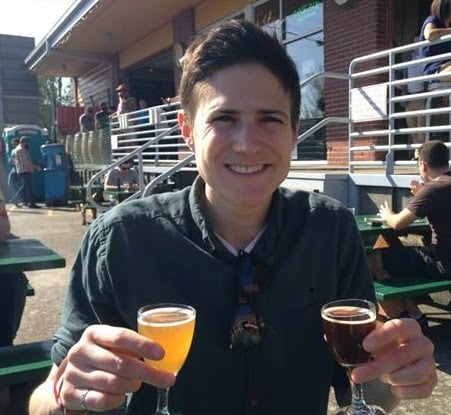
November 18, 2022
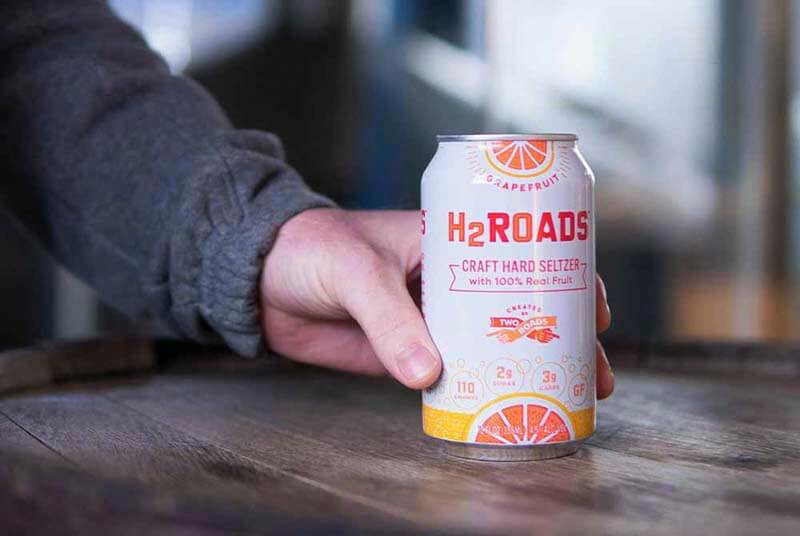
Earlier this year, we wondered if hard seltzer had lost some of its fizz. Turns out the bubble hasn’t popped yet. But the extreme growth of the category for the past three years has finally slowed down.
According to Drizly, for the first time in recent years, hard seltzer showed a seventeen percent year-over-year decrease during the 2022 Labor Day weekend. And during the summer, one of the busiest times of the year for pushing hard seltzer, Drizly reported sales dropping below last year’s Fourth of July numbers.
But despite the holiday slowdowns, the national eCommerce beverage platform did show that hard seltzer sales still have a 3.8 percent share in 2022, up from a 3.3 percent share of all sales in 2021.
While folks are still thirsty for hard seltzer, it has quickly become apparent that brands need to stand out on the shelf.
But how?
We spoke to several breweries, who have started their own craft hard seltzer brands over the past few years, to hear what has worked well for them, tips they have to share, and why you might not want to start a hard seltzer brand in today’s market.
A Quick Look at the State of Hard Seltzer
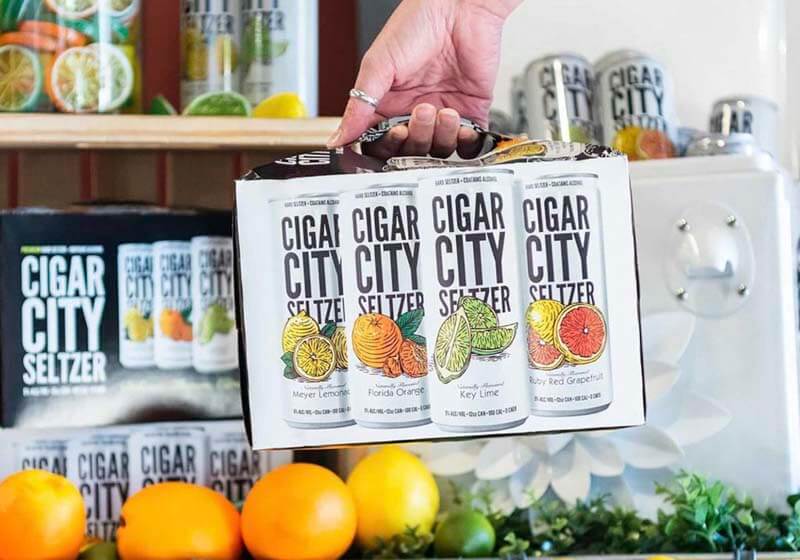
The era of triple-digit growth for hard seltzer is over. As other alcoholic beverages such as Ready-to-Drink (RTD) cocktails continue to steal market share, hard seltzer have seen their sales start to shrivel up.
For instance, sales for Boston Beer’s Truly brand, steadily the second-highest performing hard seltzer in the category, experienced a little flop. In 2021, Boston Beer management predicted the brand would grow seventy percent. In reality, Truly only grew thirty-two percent.
And in an edited transcript from a Q1 2022 Boston Beer Company Inc Earnings Call, Boston Beer Company President, CEO, and Director David A. Burwick reported that in the first quarter of 2022 Truly declined fifteen percent in volume and ten percent in dollar sales in measured off-premise channels.
“With Truly, we obviously had some challenges in the back half of last year in terms of our ability to read the market and…where the brand was going to go,” says Burwick in the edited transcript. “This year, we’re being very cautious in our expectations of the brand.” According to Burwick, the forecast for Truly in 2022 will put category volume growth between flat to plus ten percent.
Could this be a canary in the coal mine of what’s to come in the market? Or simply a one-off anomaly?
Well, because of the miscalculations, Boston Beer lowered its projected earnings for 2022. So brands should probably temper their expectations. But that doesn’t mean the hard seltzer bubble has burst. It just signals that the market is plateauing, losing some of its fizz and falling a little flatter.
“It’s always hard to know with these things because we’re still on the cutting edge,” says Bart Watson, Chief Economist at the Brewers Association, in an article for Hop Culture. “But I don’t think it’s a bubble bursting because there are some real demand reasons why this category grew.”
And overall, despite slowing sales, hard seltzer itself remains popular, generating an estimated $16.36 billion in revenue in the U.S. this year, according to Statista, and expected to grow annually by almost thirty-four percent.
“Pundits sometimes trip over themselves to be the first to declare the beginning of the end….but hard seltzers will be here for some time,” says Two Roads Brewmaster Phil Markowski, who successfully helped bring the brand’s real-fruit hard seltzer H2ROADS to market in 2019.
So while it’s hard to truly predict where hard seltzer will go from here, what is certain is that to succeed, breweries need a competitive advantage on a crowded shelf.
4 Ways Breweries and Brands Can Succeed on a Crowded Hard Seltzer Shelf
For the past few years, seltzer has coasted on the better-for-you wave, offering a beverage that’s lower in calories, lower in sugar, and lower in ABV.
But that’s already a tired trend.
“What can you do to stand out in a crowded marketplace where everybody has a 5% ABV 100-calorie black cherry?” says Watson.
Looking ahead, innovation and imagination, ingredient selection, and even imperial styles could be the key to success with hard seltzer.

1. Innovating with Flavors
“This is a game where if you’re not doing anything new, you’re dying,” says Watson.
Oftentimes flavor rotation has been a huge part of staying fresh.
“The challenge with this category…is that consumers…become very attracted to whatever is new and on the shelf,” says Burwick in the edited Q1 2022 Boston Beer Company Inc Earnings Call transcript. “We have to find a way to give news that satisfies that desire for experiences from consumers.”
For example, Truly excels at creating seasonal releases. The company recently announced the launch of their new limited-edition Truly Midnight Hard Seltzer, a limited-edition blackberry lemon-flavored beverage dyed black with natural dyes to celebrate Halloween.
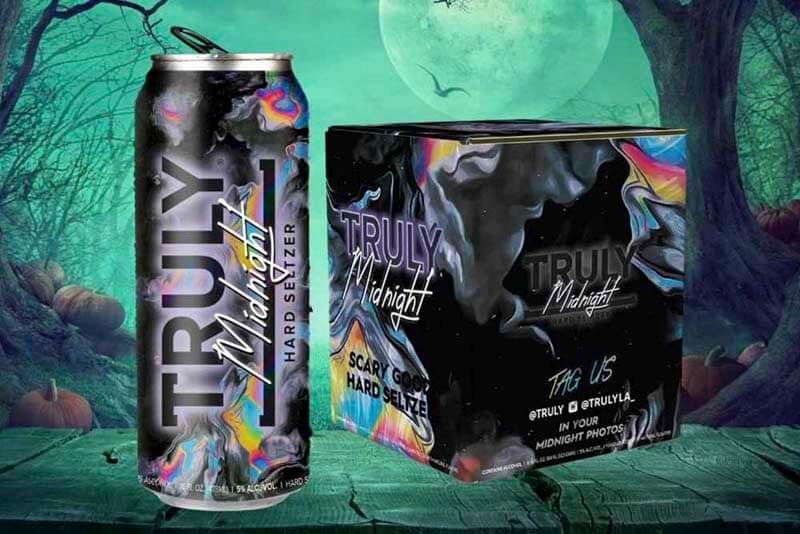
Plus, on National Vodka Day, the brand released Truly Vodka Seltzer, a spirits-based seltzer made with six-time-distilled premium vodka and real fruit juice. Flavors include Blackberry & Lemon, Cherry & Lime, Pineapple & Cranberry, and Peach & Tangerine.
The newer additions to the Truly lineup bring the brand’s portfolio to over thirty unique products (and counting)—more flavors than any other hard seltzer on the market.
“Regardless of where the category growth settles in 2022, our goal is to outgrow the category for the full year driven by innovation,” says Burwick in the edited Q1 2022 Boston Beer Company Inc Earnings Call transcript. “Our confidence that we can outgrow the category is supported by our ability to innovate.”
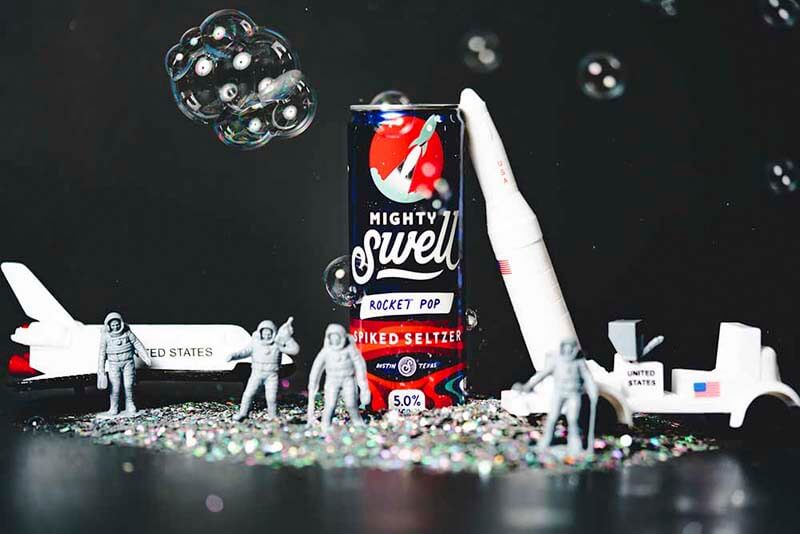
Smaller beverage brands have also turned to new, wacky flavors. For instance, Austin-based Mighty Swell introduced a “Keep It Weird’ variety pack with kooky SKUs like Tiger’s Blood (strawberry, watermelon, and coconut), Rocket Pop (raspberry, pomegranate, and lime), Purple Magic (grape, blueberry, and boysenberry), and Pink Colada (pink pineapples and coconut).
“There are a lot of twists on boring drinks in the category,” says Faryn Duncan, brand manager at Mighty Swell. “We’re going for something completely different that no one has ever done before. We’re trying to figure out what is different, new, fresh, and actually innovative in a category that has so many competitors.”
Or Roadhouse Brewing Co., which launched a brand called Seltzy including flavors labeled Kicked Back: Cucumber-Lychee, The Chill: Ginger-Lime, and The Crush: Huckleberry-Lingonberry.
“We approached [Seltzy] with flavors that we would want to drink ourselves,” says Roadhouse Brewing Co. Brewmaster Max Shafer. “They’re not adventurous flavors, but off-the-beaten-path flavors.”
According to Shafer, the idea was to develop inventive combinations featuring two predominant ingredients. Just like a beer uses multiple hops to cultivate a flavor profile, Shafer wanted to approach Seltzy’s recipe development the same way.
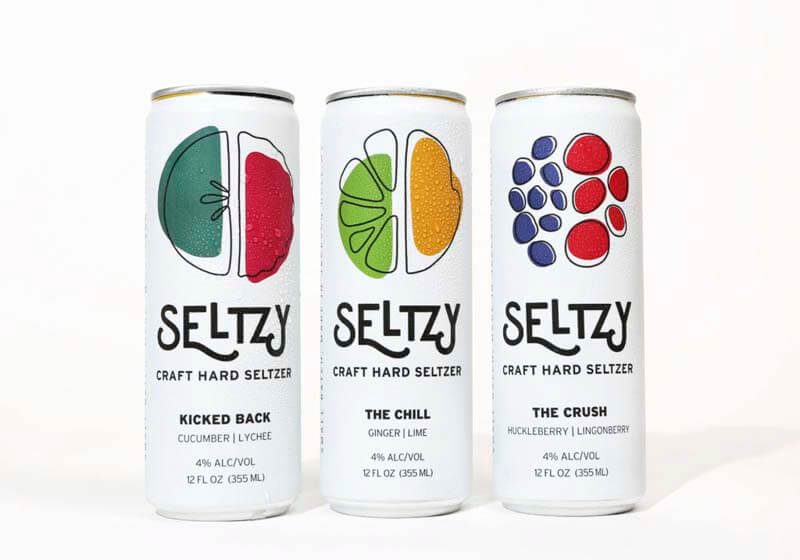
To date, Huckleberry-Lingonberry, which incorporates a fruit native to the Mountain West with a berry indigenous to Scandinavia, respectively, has been the most popular and best-selling version. “Anything that has huckleberry in its name is like crack to tourists in Jackson,” laughs Shafer.
Last year, Seltzy was an overwhelming success in Roadhouse’s market, which includes Wyoming, Colorado, Utah, Idaho, and Montana. Actually, the sales of Seltzy blew all projections out of the (hard, bubbly) water. In Q1 of 2021, Roadhouse’s distribution partner ordered a calculated number of cases they believed would last them 90 days. All of the Seltzy inventory sold out in less than one week.
“We’re trying to keep our heads above water with this freight train we’ve turned loose, but people are really digging it,” says Schafer. ”So we’ll continue producing tons of it going forward.”
But even all these innovative flavors may not be enough.
2. Real Fruit Makes a Real Difference

In its simplest form, hard seltzer is just fermented cane sugar with added fruit flavors. Now, those “fruit flavors” can come from a couple different places: Either “natural flavors,” what the FDA sort of vaguely defines as essential oils or plant extracts, or from real fruit.
But with real fruit, brewers are able to achieve a more colorful, flavorful beverage. Compared to their chemically sweetened counterparts, hard seltzers with real fruit really shine.
You can just taste and see the difference.
And now everyone from small independent craft brands to breweries making their own hard seltzers to even the bigger companies are starting to reap the benefits of using real fruit.
One of the biggest reasons hard seltzers have seen their numbers dip this year is the meteoric rise of ready-to-drink (RTD) cocktails. According to Drizly, hard seltzer saw a 278 percent growth in share on the platform from 2019-2021. Similarly, RTDs experienced a 400 percent growth in share on Drizly in 2021.
Essentially canned, spirit-centric cocktails, RTDs usually include some type of spirit base with the addition of real fruit.
It’s a lesson the hard seltzer community has taken to heart in order to stay competitive.
Take, for example, Truly.
After the country’s second most popular hard seltzer brand reported lower-than-expected sales, in 2021, Boston Beer management switched from using natural flavors in its Citrus, Berry, and Tropical packs to real fruit. Funny enough, the brand’s Lemonade, Tea, Punch, and Margarita offerings—those most similar to cocktail flavors—already included real fruit.

Similarly, Chris Lewis, brewer and co-owner of TUPPS Brewery in McKinney, TX, turned to real fruit when the brewery’s hard seltzer brand Blur released a cocktail-based flavor called Chilton.
Mimicking a popular eponymous alcoholic drink with vodka and lemon in Texas called Chilton, Blur’s version uses a hard seltzer base before “we dump a ton of lemon puree in,” says Lewis.
And although Blur includes a variety of other seltzers that use natural flavors, Chilton is currently the only variety to feature real fruit.
“There is no substitute for real fruit, especially when you’re going with citrus,” says Lewis. “Ask a flavor company to make a lemon-flavored ethanol-based extract and it’s like, why?”
He continues, “[Real fruit] just tastes better.”
And Lewis has seen that difference reflect in his bottom line. In spite of the fact that national hard seltzer sales have slumped, Lewis says that Blur Chilton has outperformed all their expectations. “We had a plan to do only 400 cases of it in a short period, a little pop right at the beginning of football season,” says Lewis. “But those 400 cases sold out in seven stores in just one weekend; we ended up doing almost 4,000 cases in a month.”
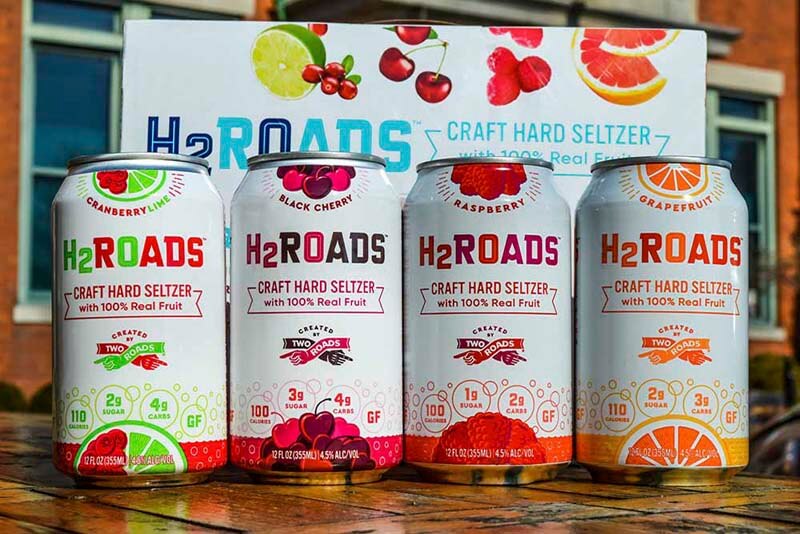
From the very beginning, Two Roads decided to include only real fruit in all of their SKUs of H2ROADS. “Real fruit has a real taste,” says Markowski. “If one cares about flavor and what they put in their body, then a preference for real fruit should be a no brainer."
According to Markowski the brand’s best-selling flavors—Raspberry, Passionfruit, Grapefruit, and Meyer Lemon—succeed because of the real fruits inside. And are performing “extremely well!” says Markowski. “I’m bullish on the fan base tiring of fake-tasting products and moving to something real, like H2ROADS.”
All signs point to real fruit innovation as the new frontier for hard seltzer.
3. Building a Brand Story
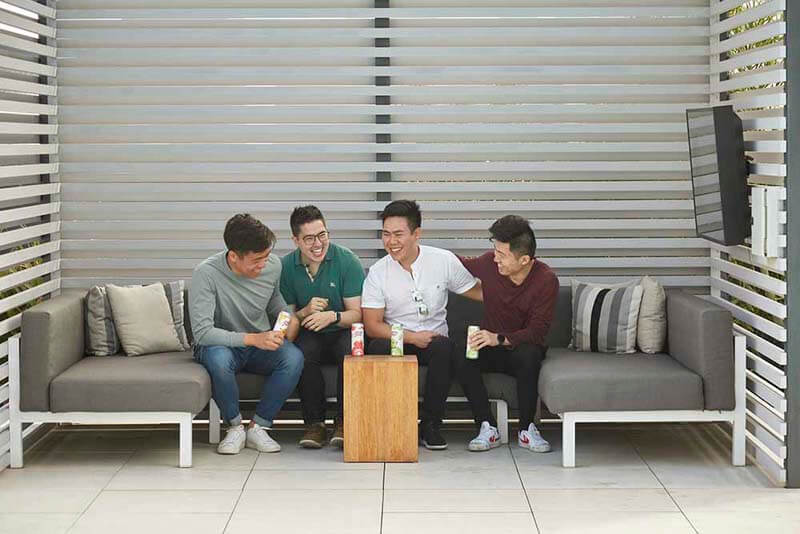
Those brands that develop an authentic identity and story will have a better chance at standing out.
For instance, Drunk Fruit hard seltzer, an AAPI-owned beverage brand owned by four Asian Americans—Kenn Miller, Steven Tang, William Zeng, and John Zhang—that focuses exclusively on bringing Asian ingredients to the American drinking industry.
“There was a lack of representative flavor profiles in the alcohol segment here in the U.S.,” says Miller in another article for Hop Culture, who actually came up with the idea for Drunk Fruit while on his honeymoon in Japan. “We started Drunk Fruit as a means to help showcase these flavors, and hard seltzer was our way to introduce this as a cross-culture experience with a twist.”
Flavors such as Lychee, based on a lychee jelly cup, a common candy you find in any Asian grocery store. Or Melon, a honeydew melon hard seltzer based on a popular popsicle bar called Melona.

“People are engaging with and trying these flavors for the first time through hard seltzer,” says Tang. “This makes our culture normal and cool… It’s a way to get ourselves out there as an Asian American population.”
And it’s a way for Drunk Fruit to differentiate themselves. One that Tang says has already impacted their business, noting that his Asian identity has actually been a strength for the Drunk Fruit brand.
And while heritage and background can play into a brand story, so too can location.
Like with the aforementioned Austin-based Mighty Swell, which taps into its heritage as a Texas brand to stand out, specifically with the Keep It Weird variety pack.
“It’s a nod to our Austin roots and the ‘Keep Austin Weird’ slogan, but it’s also something most people can relate to,” says Duncan. “We wanted it to be something that resonates with everybody, embracing individuality, weirdness, being unique and different.”
Nostalgic flavors like Rocket Pop take inspiration from the red, white, and blue bomb-shaped popsicles many probably remember from childhood. And Tiger’s Blood riffs off a popular snow cone flavor in Texas, while Purple Magic is an elevated grape soda.
“Each flavor speaks to weirdness, a little different and a little nostalgic,” says Duncan. And helps build that brand story and connect with the local community.
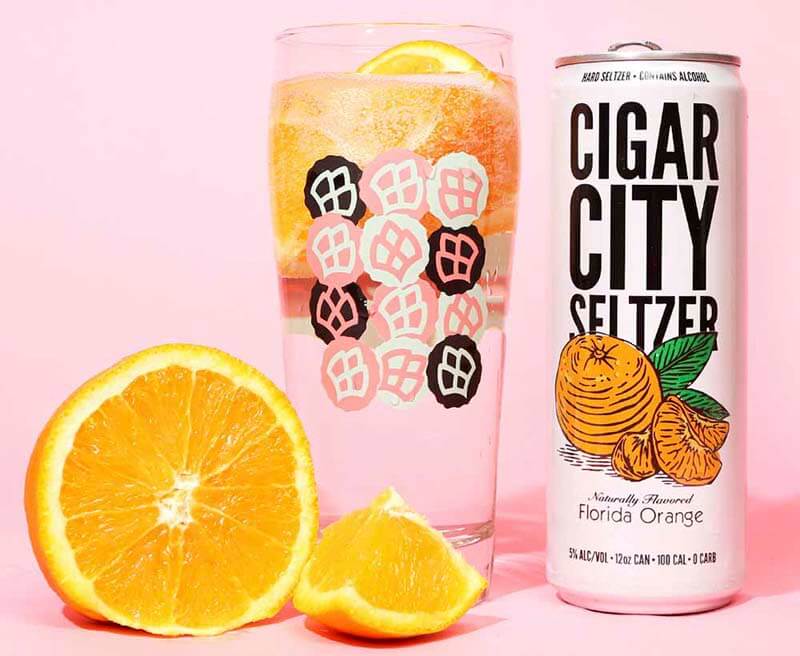
Similarly, at well-known brewery Cigar City, they started a separate brand called Cigar City Seltzer, in January 2021, that consciously reflects its Florida hometown.
When it came to seltzer, the brewery knew it needed to follow the same rigorous standards they applied to beer: high quality and “Hecho a Mano.” Meaning “Made by hand” in Spanish, “Hecho a Mano” has been a motto at Cigar City since the brewery started.
“We didn’t want to approach our seltzer as recreating other brands on the market. We wanted to take our own handmade approach,” said Neil Callaghan, former brand manager for Cigar City. “How can we find a way to create a crafted approach to seltzer?”
The answer? By doing what Cigar City does best. “When people see a Cigar City beer on a shelf, there’s an expectation,” says Callagahn. “They know the beer is high-quality, innovative, and reflects Florida. Those are the three tenets we wanted to maintain with the seltzer.”
It’s those Floridian flavors the brand launched with—Key Lime, Ruby Red Grapefruit, Florida Orange, and Meyer Lemonade—that tell Cigar City’s story and set it apart.
So far, Cigar City Seltzer has been a massive hit. Especially in Florida and the Southeast, where the brewery offers 12-can mixed packs featuring three cans of each four flavors. However, the seltzer has moved equally well with locals in the Cigar City taproom, where the brewery sells over 100 cases a month.
“You can differentiate in brand and story and you can differentiate in flavor, but I think that’s harder in seltzer often,” says Watson. “The ones who are going to do the best are the ones who do it both.”
4. Amping up the ABV
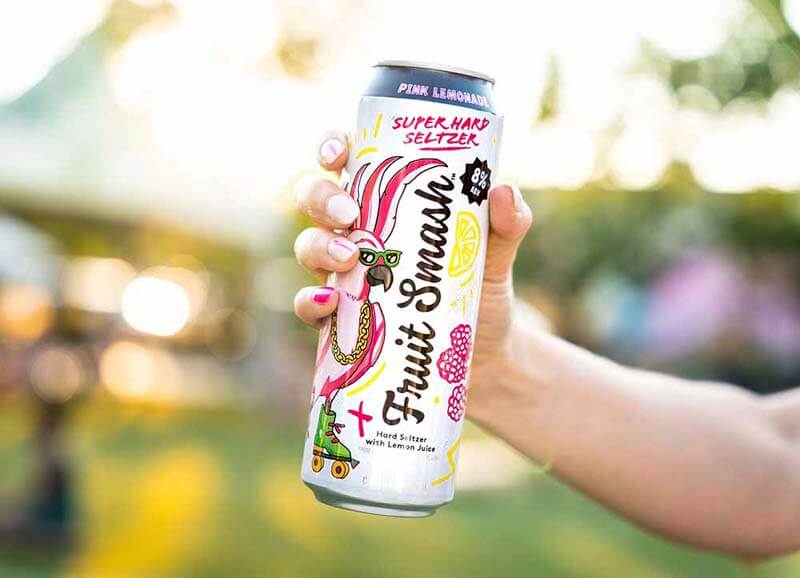
Another variable Watson has seen breweries and brands play with is ABV. “We’re starting to see more product differentiation with ABV levels,” says Watson. “Everything came in at the 5% ABV 100-calorie space and now we’re seeing people play with higher or low, particularly higher [ABV].”
For instance, last year New Belgium came out with a “Super Hard Seltzer” version of the brewery’s hard seltzer line called Fruit Smash. Whereas the original Fruit Smash flavors typically sit below 5% ABV, the Super Hard Seltzer variants amp up everything, clocking in at 8% ABV.
And earlier in the year Truly released its own amped-up version called Truly Extra. The two flavors—Pineapple Orange Punch and Berry Blast—clock in at 8% ABV.
In an already crowded shelf, where pretty much every other SKU sits closer to 5% ABV, punching up the alcohol content could immediately prove beneficial in helping your product stand out.
What Is the Future of Hard Seltzer?
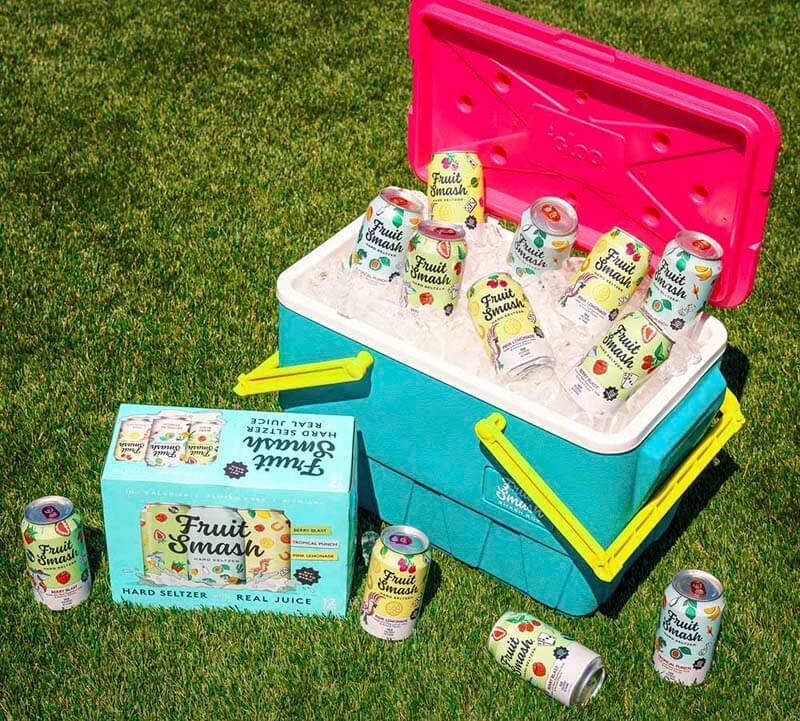
Overall, seltzer isn’t going anywhere. The bubble hasn’t necessarily burst; the pace of growth has simply fizzled.
“Going forward we’re not going to see explosive growth rates, but there is no reason to believe that seltzer is going away or that those brands will disappear anytime soon,” says Watson.
Hard seltzer popularity remains high and there is still opportunity in the space and plenty of occasions to drink.
The dynamic is simply shifting.
Hard seltzer isn’t new and trendy anymore. And that’s okay.
Overall, Lewis from TUPPS Brewing and Blur Hard Seltzer feels that, if anything, the hard seltzer market is simply evening out a bit for independent craft producers.
“Craft beer is down, big beer is down, seltzer is still gaining, but what used to be like five hundred to six hundred percent month over month is not that way now,” says Lewis. “People are settling in and finding what they like.”
So what does that mean for breweries and brands?
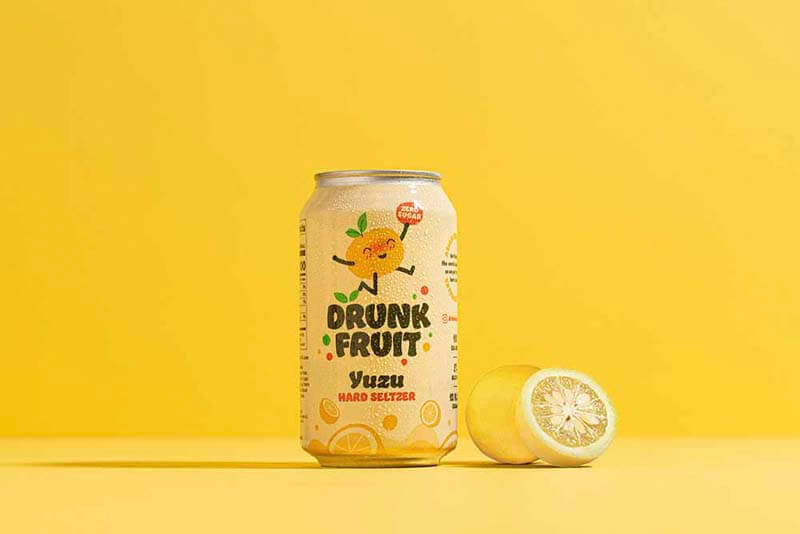
“Really this becomes a business question,” says Watson. “The bigger question for a lot of brewers is does this fit with their brand? And if so, how?”
Hard seltzer is a completely different market with different consumers. “Are you willing to invest the time and effort it takes to build a proper brand that will either complement or differentiate from your existing portfolio?” says Watson.
There are opportunities there, but brewers shouldn’t see the category numbers and assume that it’s the right opportunity for them without thinking about their brand strategically and without thinking about the alternatives, because if you put that time and effort somewhere else, you might get a better result.
Alcoholic fizzy water also isn’t the right option for every brewery or brand. And that’s fine too.
But those who will succeed in the space will need to be consistently creative with their flavors and packaging, will need to consider using real fruit and ingredients, or will need to tell a great story.
Move Beyond Your Spreadsheets
Have control over your entire inventory and fulfillment processes from anywhere with Ollie. Even integrate with your existing inventory and accounting applications.
